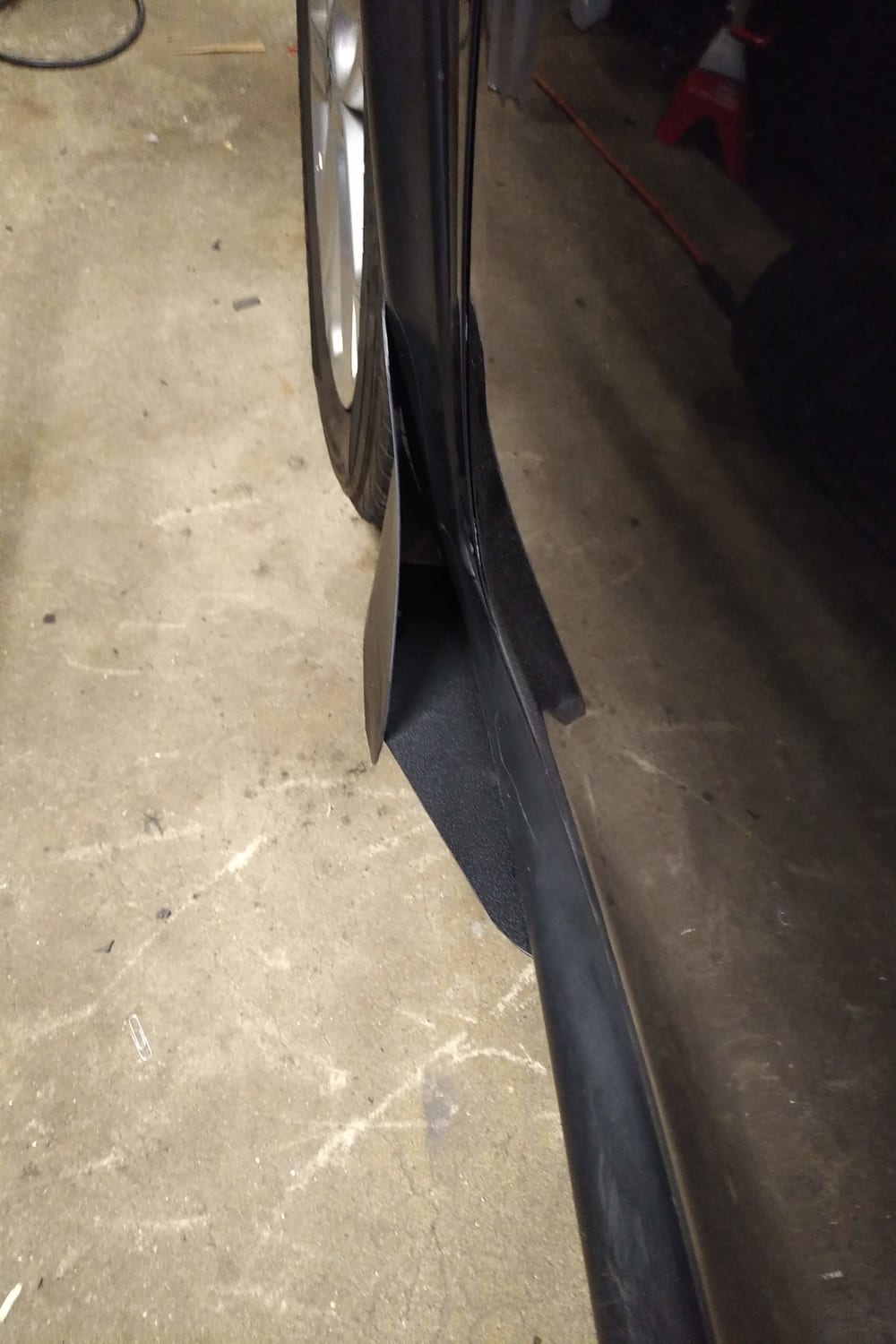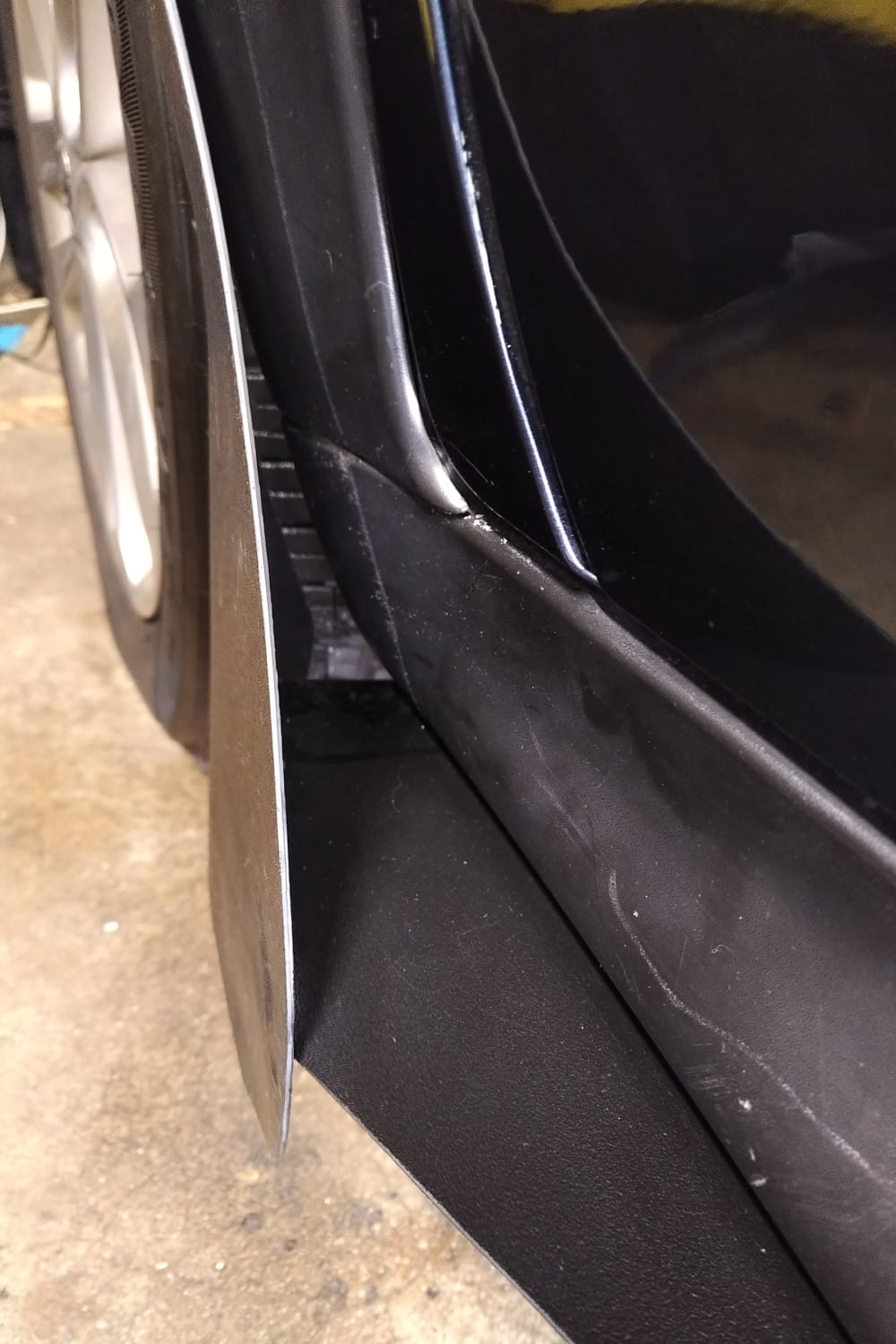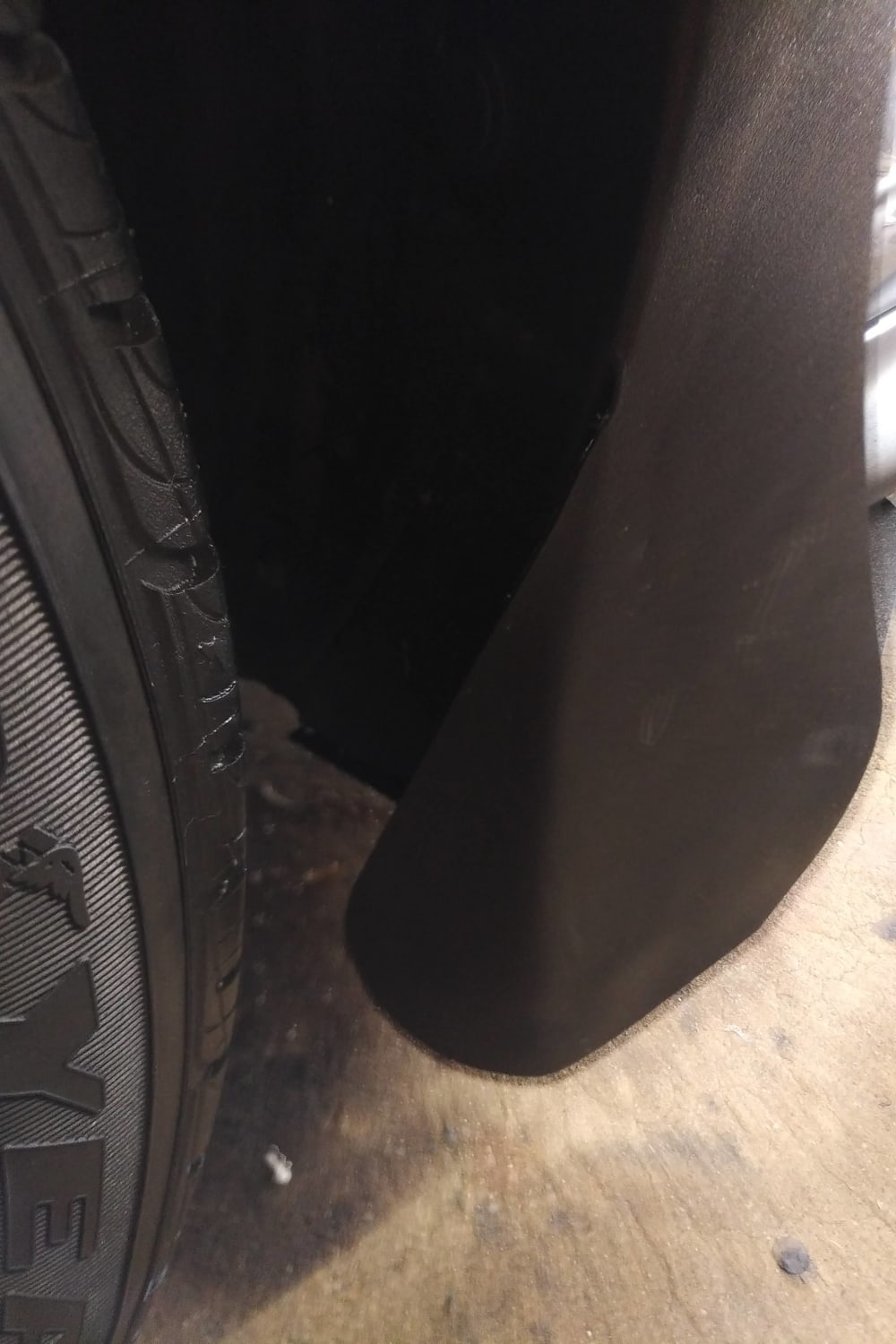Protection from stones and mud kicked up from tires has tended to have a somewhat blunt approach. A flat piece of material is typically placed behind the wheel to block debris, but it also blocks airflow. Significant improvements in fuel economy have been seen from removing mud flaps or adding perforations/louvers (with claims of up to 3.5% improvement in fuel economy), particularly on large trucks. On cars, the blocked airflow increases pressure within the front wheel well, which typically serves as an exit for air passing through the radiator. To avoid the efficiency penalty, many car mud flaps are undersized and provide inadequate protection.
After driving through a mud puddle, I noticed that the splatter on the side of the vehicle had a trajectory that did not follow how I assumed airflow would be heading down the fender and front door, which was confirmed using wool tufts. Inspecting existing scratch direction provided further confirmation, with denser material following a trajectory starting roughly perpendicular to the radius of the tire, losing momentum with distance. In addition, wool tufts showed air coming out of the wheel well behind the tire was turbulent and tended to flow outward, rather than along the side of the vehicle.
A new front mud flap design was developed to block the trajectory of denser material from hitting painted surfaces, while also smoothing airflow along the side of the vehicle, with a flap that extends into the wheel well combined with an expanding opening/diffuser to reduce pressure within the wheel well. Material was intentionally focused on blocking the trajectory from the tire and not adding frontal area, with rounded edges to reduce noise. A magnehelic gauge measured significant relative pressure drops within the wheel wells compared to both the factory mud flap and no mud flap, testing options on both sides of the vehicle. This pressure difference increased with speed. In addition, mud splatter on painted surfaces was virtually eliminated. Wool tufts showed a smoothing of airflow along the side of the vehicle. Subsequent versions reduced material and the potential damage from contact with deep snow (which tore off the initial prototype), while maintaining performance. A derived design is in testing to protect painted surfaces at the rear wheel while helping to smooth turbulent airflow off the rear tire and direct it toward the center of the vehicle to reduce drag.
Using a similar approach, mud flap systems can be developed for other vehicles, providing both increased protection and improved aerodynamic performance, reducing fuel consumption and CO2 emissions. Software using a scan of the vehicle’s painted surfaces and mounting points in relation to the tire, combined with CNC-based production, has the potential to significantly streamline the process. The functional prototypes used ABS due to ease of fabrication and formability, but other materials are under consideration to improve flexibility on impact and improve shedding of stalled mud, particularly on horizontal surfaces. While SolidWorks was used during the design, additional simulation can further optimize and validate the design.
Like this entry?
-
About the Entrant
- Name:Larry Evans
- Type of entry:individual
- Software used for this entry:SolidWorks
- Patent status:none








